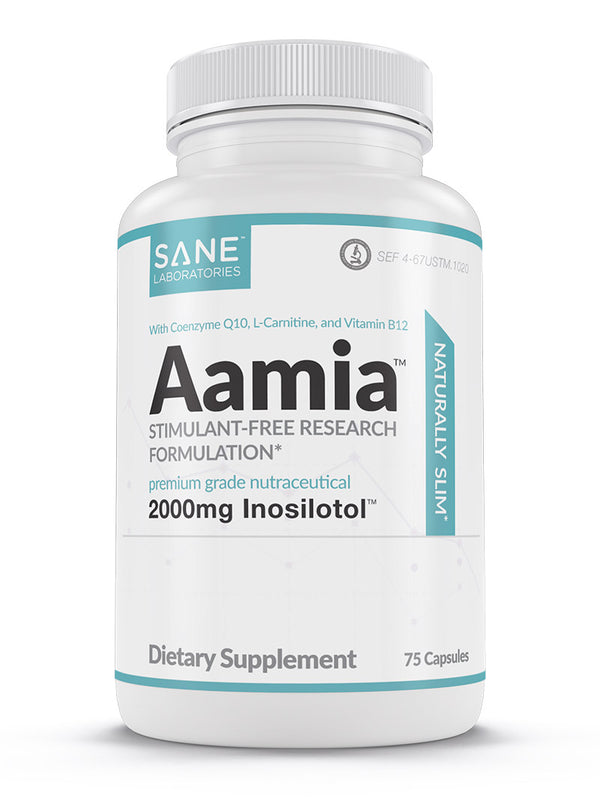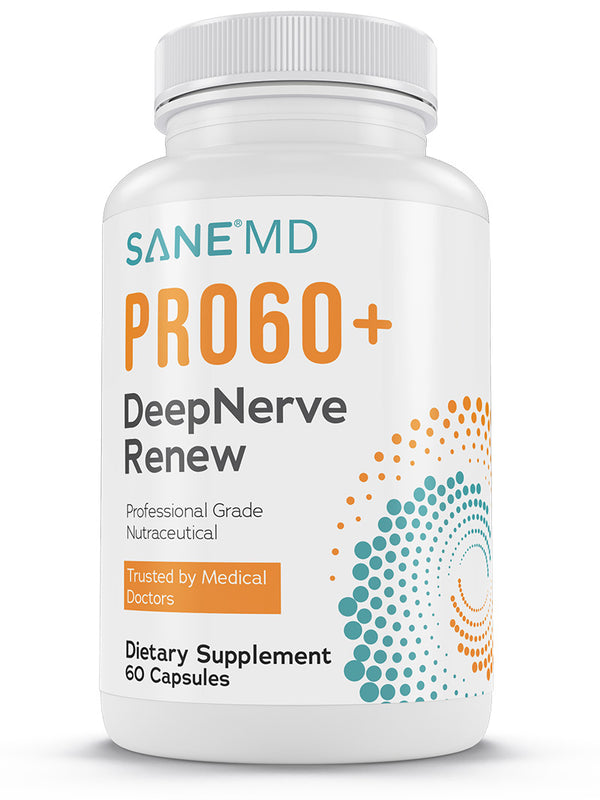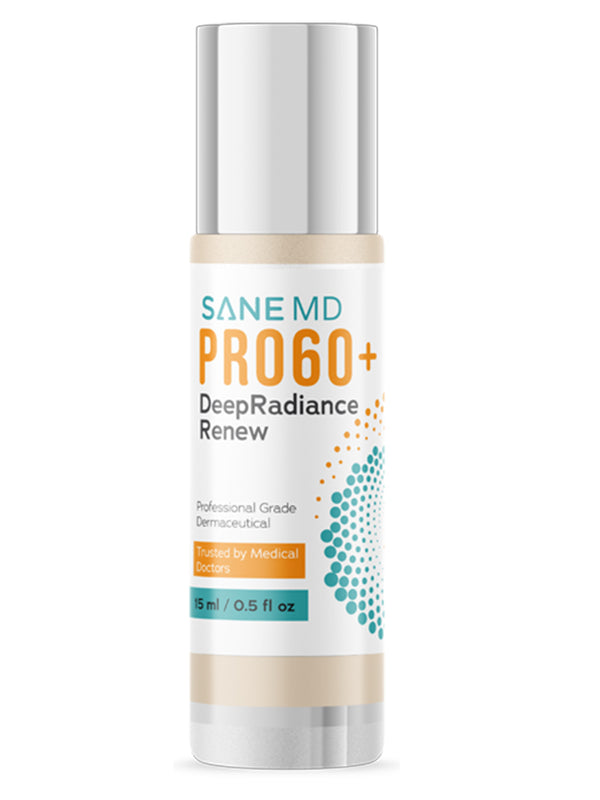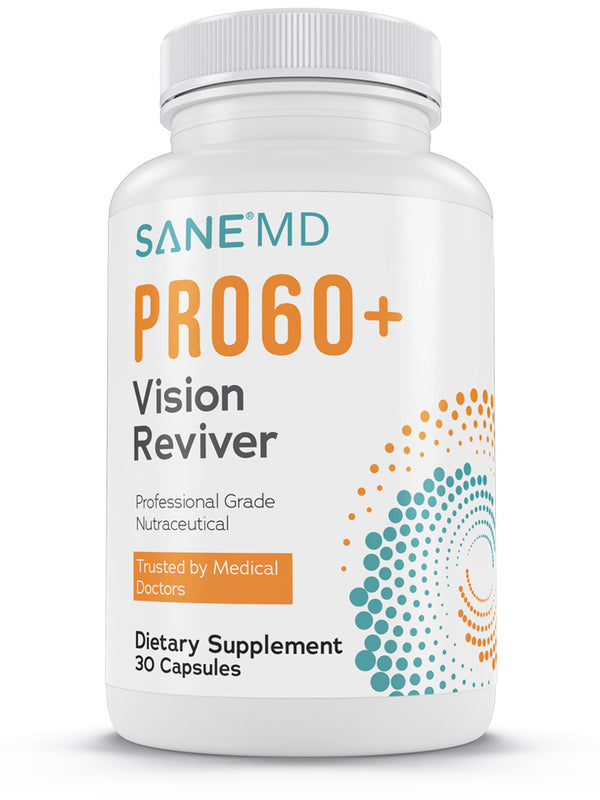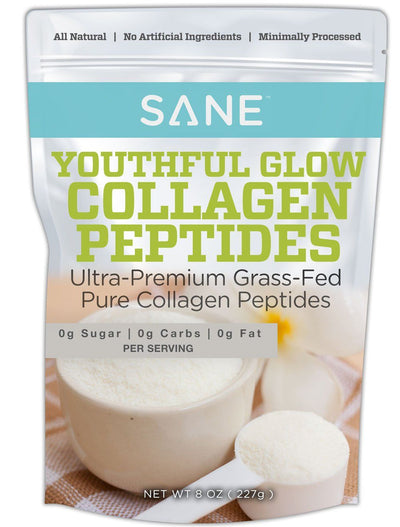When it comes to pursuing better health, every choice matters. From the foods you eat to the activities you enjoy, it’s all about finding that perfect balance. And sometimes, it’s the little things that can make a big difference. One such hidden gem? Wheatgrass powder.
Click here to learn more about Garden in My Glass and to place your order now while supplies last!
This humble yet powerful ingredient packs all the benefits of fresh wheatgrass into a convenient, concentrated powder. It’s a simple way to boost the nutrition in your everyday meals while supporting your overall health in surprising ways. This is especially true if you choose wheatgrass powder that is certified kosher and certified vegan, ensuring it meets high nutritional and ethical standards.
Think of wheatgrass powder as your secret weapon in the kitchen. It doesn’t just add a subtle earthy flavor to smoothies or snacks—it’s loaded with essential vitamins, minerals, and antioxidants like chlorophyll. Known for its detoxifying abilities, chlorophyll can help cleanse your body and even give your immune system a little extra support. Adding this to your routine could be the missing piece in your health puzzle. Consuming wheatgrass powder on an empty stomach can maximize its benefits.
Our goal here is simple: to show you how wheatgrass powder can help you hit those health milestones without being overwhelmed by too much info or unrealistic expectations. This isn’t just a list of health tips—it’s a guide to how small, smart changes, like including wheatgrass powder in your diet, can lead to lasting results.
Let’s face it, navigating the world of health supplements can feel confusing. But the beauty of wheatgrass powder is its natural, whole-food base. It’s a supplement that works in harmony with your body to help strengthen your health and vitality.
As we dive deeper, keep in mind that your journey to better health is personal. The suggestions we’re sharing are here to inspire and empower you to take small, manageable steps toward your goals. Wheatgrass powder is just one part of that journey, but it can make a significant impact when combined with other healthy habits.
Stay tuned as we break down the best ways to easily incorporate wheatgrass powder into your routine, making your path to wellness both delicious and nourishing.
Elevating Your Lifestyle: Simple Changes to Boost the Benefits of Wheatgrass Powder
When it comes to reaching your health goals, it’s more than just what you eat or how often you work out. The way you live your everyday life can really impact how much you benefit from powerful supplements like wheatgrass powder. To get the most out of it, a few small lifestyle adjustments can go a long way.
Here are four easy changes you can make to enhance the positive effects of wheatgrass powder:
1. Make Sleep a Priority
Getting enough quality sleep isn’t just good for your mood; it’s crucial for your overall health and can even boost the benefits of wheatgrass powder. Aim for 7-9 hours of solid, uninterrupted sleep each night so your body can recharge and make the most of those healthy nutrients. Try setting up a calming nighttime routine—limit screen time before bed, keep your space cozy, and create a sleep-friendly environment. When your body is well-rested, it’s better equipped to absorb and use the nutrients from wheatgrass, helping you feel more energized and resilient.
2. Tackle Stress with Ease
We all know stress can mess with our health, but it can also reduce how much we benefit from supplements like wheatgrass powder. Incorporating stress-relief techniques, like meditation, yoga, or just taking time to unwind in nature, can help keep those stress levels in check. When your mind and body are in a relaxed state, they’re much more efficient at absorbing nutrients, letting you really tap into the full potential of wheatgrass powder.
3. Nurture Positive Relationships
Surrounding yourself with positive, supportive people can work wonders for your well-being. Whether it’s family, friends, or community, strong relationships can boost your mood, keep you motivated, and even amplify the benefits of healthy habits, like adding wheatgrass powder to your routine. Make time to connect with loved ones and build relationships that inspire you to stay on track with your wellness journey.
4. Practice Mindfulness Every Day
Mindfulness isn’t just about meditating—it’s about being present in the moment, whether you’re eating, working, or relaxing. By practicing mindful living, you can enhance how your body responds to the foods and supplements you take, like wheatgrass powder. Pay attention to your meals, savor each bite, and listen to your body’s hunger and fullness cues. Mindful living helps create a balanced, more aware approach to your overall health, making wheatgrass powder an even more effective ally in your wellness routine.
By incorporating these lifestyle changes, you create the perfect environment for wheatgrass powder to work its magic. These simple adjustments can elevate your health journey and make reaching your goals more attainable. Small steps, big impact—start today!

Nourishing Your Body: Simple Diet Tweaks to Maximize the Benefits of Wheatgrass Powder
Diet plays a massive role in your overall health journey, and with a few small adjustments, you can really amplify the benefits of wheatgrass juice powder. Whether you’re looking for easy ways to include it in your meals or want to experiment with new flavors, these four dietary changes will help you make the most of this superfood:
1. Add Wheatgrass Powder to Your Smoothies
One of the easiest (and tastiest) ways to enjoy wheatgrass powder is by blending it into your daily smoothie.Adding wheatgrass juice powder to your smoothies is a simple and effective way to boost your nutrient intake. The concentrated juice powder retains maximum nutrients, making it easy to incorporate into your diet.
Throw a scoop of wheatgrass powder into the mix with your favorite fruits, leafy greens, and a splash of plant-based milk, and you've got yourself a nutrient-packed drink that’s both delicious and healthy. This boosts the nutritional value of your smoothie, giving you a concentrated dose of vitamins, minerals, and antioxidants in every sip. Plus, wheatgrass is naturally gluten-free, so it's a worry-free addition to your routine. Starting your day with this power-packed drink sets you up for success by giving your body a vibrant boost right from the get-go!
2. Sprinkle It on Salads and Soups
Looking for an easy way to sneak extra nutrients into your meals? Try sprinkling wheatgrass powder on top of your favorite salads or stirring it into soups and stews. The great thing about wheatgrass powder is that it doesn’t change the flavor or texture of your dishes, so you get all the health benefits without any fuss. Whether you're enjoying a crisp salad or a warm bowl of soup, a dash of wheatgrass powder can elevate the meal with an extra burst of vitamins and antioxidants. It’s a simple but effective way to give your everyday dishes a healthy upgrade!
3. Mix Wheatgrass Powder into Dressings and Sauces
Enhance your dressings and sauces by adding wheatgrass powder. The natural flavor of the powder complements a variety of dishes, providing health benefits without artificial additives. So, get a little creative in the kitchen by adding wheatgrass powder to homemade dressings, sauces, or dips. Blend it with olive oil, lemon juice, and fresh herbs for a vibrant salad dressing, or mix it into your favorite creamy dip for a nutrient boost. This is a fun and flavorful way to work more wheatgrass into your diet without even thinking about it! Whether you’re drizzling it over your salad or dipping fresh veggies into it, adding wheatgrass powder to your dressings and sauces is a tasty way to sneak more nutrition into your meals.
4. Bake It Into Your Favorite Treats
Who says you can’t have your cake and eat it too? Try incorporating wheatgrass powder into your baking for a guilt-free nutritional boost. You can add it to muffins, pancakes, or even energy balls for a fun twist. It’s an easy way to sneak in extra vitamins, minerals, and antioxidants, turning your baked goods into health-conscious snacks. Whether you’re making breakfast muffins or a batch of snacks for the week, baking with wheatgrass powder adds extra goodness to your treats while still keeping them delicious.
5. Mix into Juices
Mix wheatgrass powder into your favorite juices. Some wheatgrass powders come in a refreshing lemon flavor, adding a zesty twist to your drink. Incorporating fresh juice into your diet along with wheatgrass powder can maximize nutrient intake, support detoxification, and boost overall well-being.
With these easy diet changes, you can unlock the full potential of wheatgrass powder and take your health goals to the next level. Remember, even small tweaks can make a big difference, so why not start incorporating these ideas into your meals today?
Energize Your Routine: Activity Changes to Maximize the Benefits of Wheatgrass Powder
Physical activity is a cornerstone of good health, and when combined with wheatgrass powder, you can take things to the next level. By making a few strategic changes to your routine, you can maximize the benefits of wheatgrass powder and enhance your overall well-being. Using organically grown wheatgrass powder can further enhance the benefits of your physical activities.
Here are four activity tweaks that can help you harness the full potential of this superfood:
1. Try Wheatgrass-Infused Yoga
Boost your yoga sessions by sipping on wheatgrass-infused water throughout your practice. Just mix a little wheatgrass powder into your water bottle, and you’ll stay hydrated and energized as you flow through your poses. The nutrients in wheatgrass powder, like vitamins and antioxidants, can help improve flexibility, support strength, and sharpen your mental focus. Whether you’re flowing through sun salutations or holding a challenging pose, incorporating wheatgrass powder into your yoga routine will enhance that mind-body connection and leave you feeling more balanced and energized.
2. Power Your Workouts with a Wheatgrass Smoothie
Fuel up before your next workout with a smoothie that’s packed with the benefits of wheatgrass powder. Blend a scoop of wheatgrass powder with banana, spinach, and almond milk for a refreshing pre-workout drink. The vitamins and minerals in wheatgrass powder can help increase your energy levels and endurance, giving you the boost you need to power through your workouts. Plus, it supports muscle recovery, so you’ll feel ready for your next session. Whether you’re hitting the gym or heading out for a run, a wheatgrass smoothie will give you the extra push to crush your fitness goals.
3. Support Post-Workout Recovery
After a tough workout, your body needs to recover—and that’s where wheatgrass powder can really shine. Mix it with water or coconut water to create a hydrating drink that helps reduce inflammation and speed up muscle recovery. The antioxidants and other nutrients in wheatgrass powder support your body’s natural healing processes, helping you bounce back faster so you can stay on track with your fitness routine. Whether you’re lifting weights or going on a long run, incorporating wheatgrass powder into your post-workout routine can help you feel refreshed and rejuvenated.
4. Take Your Workouts Outdoors
Why not combine the benefits of fresh air and exercise with the power of wheatgrass powder? Take your workouts outside—go for a hike, bike along scenic trails, or simply enjoy a walk in the park while sipping on a wheatgrass-infused drink. Being out in nature can invigorate both your body and mind, and adding wheatgrass powder into the mix only amplifies those effects. The nutrients in wheatgrass powder, paired with the benefits of sunshine and fresh air, can give you a full-body boost, leaving you feeling energized and ready for anything.
By making these small activity changes, you can maximize the benefits of wheatgrass powder and supercharge your health and fitness routine. Whether you’re indoors or out, on the mat or hitting the trails, wheatgrass powder is the perfect companion to help you feel your best. Try these tips today and watch your routine get a healthy boost!
Enhancing Your Health: Key Benefits of Wheatgrass Powder
1. Digestive Health
Wheatgrass powder is a powerhouse when it comes to supporting digestive health. Thanks to its high fiber content, it can help promote regular bowel movements and prevent constipation, making your digestive system run more smoothly. But that’s not all—wheatgrass powder is also packed with antioxidants and enzymes that can reduce inflammation in the digestive tract. This can be particularly beneficial for those dealing with irritable bowel syndrome (IBS) or other digestive issues.
By incorporating wheatgrass powder into your diet, you may find that your digestion improves, bloating decreases, and your immune system gets a boost. It’s a simple addition that can make a big difference in how you feel every day.
2. Weight Management
If you’re looking to manage your weight more effectively, wheatgrass powder can be a valuable ally. The fiber and protein in wheatgrass powder help keep you feeling full and satisfied, which can reduce the likelihood of overeating. This makes it easier to stick to your weight management goals without feeling deprived. Additionally, the antioxidants and other nutrients in wheatgrass powder can help boost your metabolism and support your body’s natural detoxification processes.
By adding wheatgrass powder to your diet, you may experience improved weight management, increased energy levels, and a reduced risk of chronic diseases. It’s a small change that can lead to significant results.
3. Immune System Support
Wheatgrass powder is rich in antioxidants, vitamins, and minerals that can give your immune system a much-needed boost. High levels of vitamins C and E in wheatgrass powder help protect your cells from damage, reduce inflammation, and support the production of white blood cells. These are crucial for fighting off infections and keeping you healthy. Additionally, the amino acids present in wheatgrass powder support the body’s natural detoxification processes, promoting overall health and well-being.
By incorporating wheatgrass powder into your diet, you may experience improved immune function, a reduced risk of illness, and a stronger overall sense of health and vitality. It’s an easy way to support your body’s defenses and feel your best.
By understanding and leveraging these key benefits, you can make wheatgrass powder a cornerstone of your health and wellness routine. Whether you’re looking to improve digestion, manage your weight, or boost your immune system, wheatgrass powder offers a natural and effective solution.
Unraveling the Mysteries of Wheatgrass Powder: Frequently Asked Questions
1. What is wheatgrass powder, and how is it made?
Wheatgrass powder comes from the young grass of the wheat plant, known as Triticum aestivum, commonly referred to as wheat grass. Wheat grass juice is another popular form of this superfood. To make the powder, the wheatgrass is harvested while it’s still young and full of nutrients—usually within the first 7-10 days of sprouting. After that, the grass is dried and finely ground into a powder, preserving all the essential vitamins, minerals, antioxidants, and chlorophyll. This process makes wheatgrass powder a convenient and nutrient-rich supplement to support your health. There’s also wheatgrass juice powder, which is made by dehydrating fresh wheatgrass juice. You can find options that are certified organic, kosher, and vegan, giving you even more flexibility in choosing a product that fits your lifestyle.
What are the health benefits of consuming wheatgrass powder for the immune system?
Wheatgrass powder packs a nutritional punch! It’s loaded with vitamins, minerals, antioxidants, and chlorophyll that can support your overall wellness. Some of the key benefits include boosting energy, supporting detoxification, improving digestion, strengthening the immune system, and reducing inflammation. The antioxidants in wheatgrass may also help protect your cells from damage, promoting long-term health. When combined with a balanced diet and active lifestyle, wheatgrass powder can be a great addition to your wellness routine.
3. How can I incorporate wheatgrass powder into my daily routine?
It’s super easy to add wheatgrass powder to your day. One popular option is to mix a scoop into your morning smoothie—just blend it with your favorite fruits and greens for an extra nutrient boost. You can also stir it into water, juice, or plant-based milk for a quick drink. If you like getting creative, try sprinkling it on salads, soups, or yogurt or even adding it to homemade dressings or baked goods. Wheatgrass powder is versatile, so you can find ways to enjoy it that fit seamlessly into your daily life.
4. Are there any side effects or precautions to be aware of?
For most people, wheatgrass powder is safe when consumed in moderation. However, some might experience mild side effects like digestive upset, especially if consuming large amounts. If you have a known wheatgrass allergy or gluten sensitivity, be cautious, though pure wheatgrass is naturally gluten-free. As with any supplement, if you’re pregnant, breastfeeding, or dealing with health conditions, it’s always a good idea to check with a healthcare professional before adding wheatgrass powder to your routine.
5. How do I choose a high-quality certified organic wheatgrass powder supplement?
To get the most out of wheatgrass powder, it’s important to choose a high-quality powder organic product. Look for organic and non-GMO wheatgrass to avoid exposure to pesticides and chemicals. Also, check that the powder is made using low-temperature drying methods to maintain its nutrient content. Make sure to read the label for any added fillers, preservatives, or artificial ingredients. Finally, it’s smart to buy from trusted brands that conduct third-party testing to guarantee quality and purity.
Embrace the Power of Wheatgrass Powder for Better Health
Wheatgrass powder is a powerhouse when it comes to boosting your health. By adding it to your daily routine—whether in smoothies, sprinkled on food, or mixed into recipes—you can enjoy its benefits and support your overall well-being.
Let’s share the health-boosting power of wheatgrass powder with those around us and inspire each other to thrive on our wellness journeys. Share this article with friends and family, and spread the word about how simple it can be to nourish your body with wheatgrass powder!
Ready to Elevate Your Wellness Routine with Garden in My Glass?
With Garden in My Glass, you get the power of wheatgrass powder combined with 30+ other superfood ingredients, all in one convenient blend. Packed with essential nutrients, it’s the perfect addition to your daily smoothies, salads, or favorite recipes. Support your energy, immune health, and overall well-being with every scoop. Start nourishing your body today and discover how simple it is to feel your best with Garden in My Glass.
Grab yours now and take the first step toward vibrant health!
Click here to learn more about Garden in My Glass and to place your order now while supplies last!



